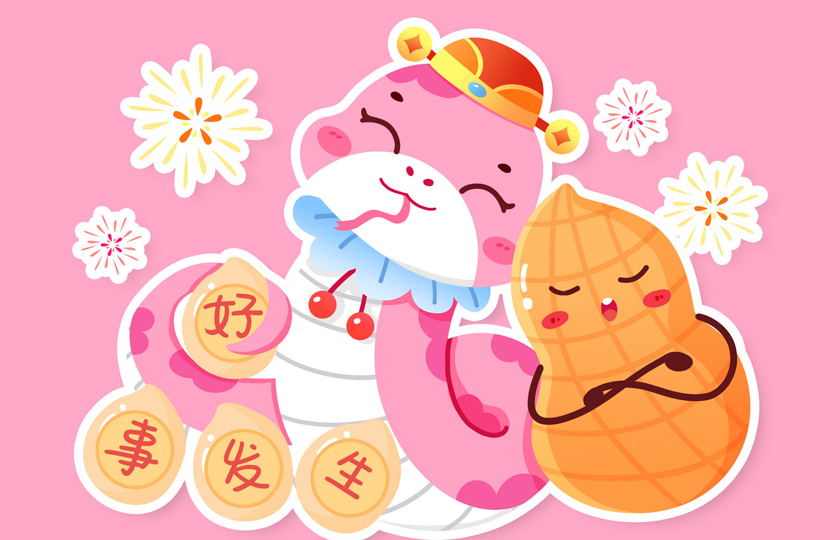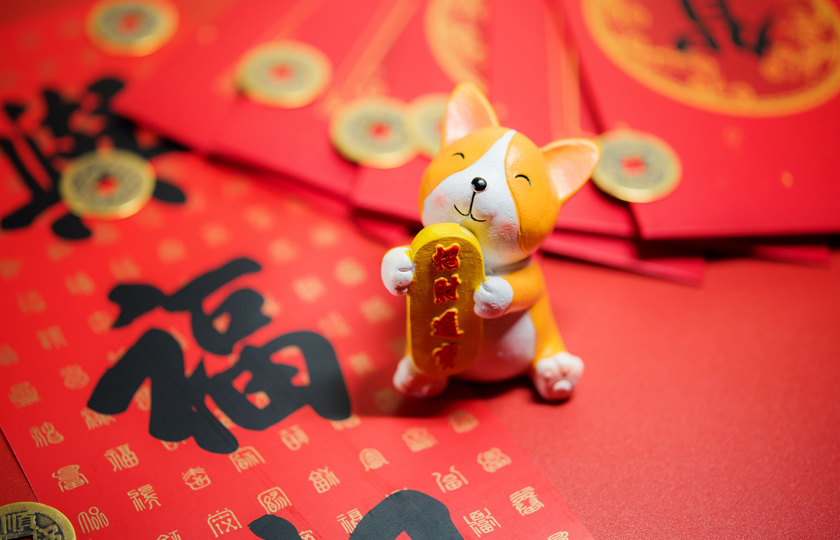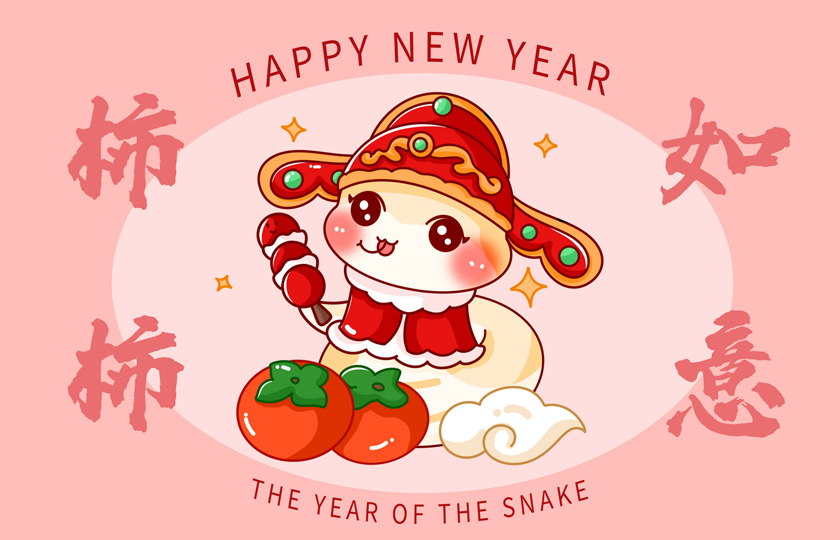The Fascinating Cycle of Chinese Zodiac Years

Today, I want to introduce you to a fascinating and mysterious topic—the Chinese Zodiac. In China, each year is represented by a specific animal, which serves not only as a symbol but also carries rich cultural and historical significance. Let's explore this unique Zodiac system together and see how these animals influence our lives and culture.
Cultural Introduction to the Chinese Zodiac
Today, I’d like to discuss a fascinating and culturally rich topic—the Chinese Zodiac.
Historical Origins
As someone with a deep understanding of Chinese history and culture, I can tell you that the origins of the Zodiac can be traced back to ancient people's methods of recording time and performing rituals. The earliest records appear in the Book of Songs, dating back over two thousand years. The Zodiac not only reflects ancient people's reverence for and dependence on animals but also illustrates their understanding and respect for natural laws.
Order and Symbolic Meanings of the Zodiac
The twelve animals in the Zodiac are: Rat, Ox, Tiger, Rabbit, Dragon, Snake, Horse, Goat, Monkey, Rooster, Dog, and Pig. Each animal has its own unique symbolic meaning:
Rat: Clever and resourceful, symbolizing wealth.
Ox: Diligent and dependable, symbolizing abundance.
Tiger: Brave and powerful, symbolizing strength.
Rabbit: Gentle and kind, symbolizing peace.
Dragon: Majestic and noble, symbolizing good fortune.
Snake: Wise and adaptable, symbolizing change.Horse: Free-spirited and energetic, symbolizing vitality.
Goat: Gentle and harmonious, symbolizing beauty.
Monkey: Intelligent and curious, symbolizing cleverness.
Rooster: Hardworking and punctual, symbolizing diligence.
Dog: Loyal and reliable, symbolizing friendship.
Pig: Honest and generous, symbolizing prosperity.
Applications of the Zodiac
Birthdays and Years
In traditional Chinese culture, each Zodiac animal corresponds to a specific year, with a cycle repeating every twelve years. For example, 2024 is the Year of the Rat, 2025 is the Year of the Snake, and 2026 is the Year of the Horse, and so on. The Zodiac is used not only for marking years but also for calculating birthdays and selecting auspicious days.
Cultural Activities
During the Spring Festival, the Zodiac takes center stage in celebrations. This year, you may see many decorations and activities related to the Snake. Additionally, Zodiac imagery is prevalent in paintings, sculptures, and crafts, making it an important part of folk art.
Chinese zodiac meanings
Rat
Symbolizes: Intelligence, adaptability
Personality Traits: Clever, sociable, and highly adaptable.
Cultural Significance: The Year of the Rat is seen as a symbol of abundance, often associated with wealth and prosperity.
Ox
Symbolizes: Diligence, reliability
Personality Traits: Steady, dependable, with a strong sense of responsibility.
Cultural Significance: The Year of the Ox represents hard work and patience, making it suitable for long-term endeavors.
Tiger
Symbolizes: Courage, decisiveness
Personality Traits: Energetic, with leadership qualities.
Cultural Significance: The Year of the Tiger is often viewed as a symbol of protection and strength, ideal for adventure and exploration.
Rabbit
Symbolizes: Gentleness, cleverness
Personality Traits: Kind, flexible, and good at building relationships.
Cultural Significance: The Year of the Rabbit is considered a symbol of peace and longevity, well-suited for family life.
Dragon
Symbolizes: Mystery, authority
Personality Traits: Confident and creative.
Cultural Significance: The Year of the Dragon is regarded as the most auspicious year, symbolizing success and nobility.
Snake
Symbolizes: Wisdom, agility
Personality Traits: Thoughtful, intuitive, and insightful.
Cultural Significance: The Year of the Snake is often associated with change and adaptability, suitable for navigating complex situations.
Horse
Symbolizes: Freedom, vitality
Personality Traits: Lively, enthusiastic, and adventurous.
Cultural Significance: The Year of the Horse represents vigor and ambition, ideal for pursuing dreams.
Goat
Symbolizes: Gentleness, kindness
Personality Traits: Compassionate and values harmony.
Cultural Significance: The Year of the Goat is viewed as a symbol of peace and tranquility, suitable for creating a pleasant environment.
Monkey
Symbolizes: Wit, flexibility
Personality Traits: Intelligent, curious, and creative.
Cultural Significance: The Year of the Monkey is often linked to innovation and change, perfect for seeking new experiences.
Rooster
Symbolizes: Hard work, punctuality
Personality Traits: Organized and detail-oriented.
Cultural Significance: The Year of the Rooster symbolizes responsibility and effort, suitable for achieving career success.
Dog
Symbolizes: Loyalty, reliability

Personality Traits: Friendly and strong sense of justice.
Cultural Significance: The Year of the Dog is viewed as a symbol of friendship and protection, ideal for building deep relationships.
Pig
Symbolizes: Honesty, generosity
Personality Traits: Kind, optimistic, and easily satisfied.
Cultural Significance: The Year of the Pig is often associated with abundance and happiness, suitable for enjoying life's pleasures.
Chinese zodiac story
In traditional Chinese culture, the origin of the twelve zodiac animals is an intriguing tale. Long ago, the Jade Emperor decided to hold a competition to select twelve animals as zodiac representatives, arranging them according to the order in which they reached the Heavenly Palace.
The Competition Begins
On the day of the race, all the animals were eager to participate. The Jade Emperor announced that the first twelve animals to reach the Heavenly Palace would become the zodiac animals, and they would be arranged in the order of their arrival.
Animal Rivalry
The race commenced, and various animals gave it their all, rushing towards the Heavenly Palace. The clever Rat took advantage of the Ox’s strength, climbing onto the Ox’s back. Just as the Ox was about to reach the finish line, the Rat leaped off and quickly scampered ahead, becoming the first zodiac animal.
Following the Rat, the Ox, Tiger, Rabbit, Dragon, Snake, Horse, Goat, Monkey, Rooster, Dog, and Pig arrived in succession. Each animal earned its ranking based on its speed and cleverness.
Final Rankings
In the end, the ranking of the twelve zodiac animals was established as follows: Rat, Ox, Tiger, Rabbit, Dragon, Snake, Horse, Goat, Monkey, Rooster, Dog, and Pig. The Jade Emperor assigned specific symbolic meanings and personality traits to each zodiac animal based on this ranking.
Cultural Significance
This story is not only entertaining but also conveys profound lessons. It illustrates that both intelligence and effort are crucial, and everyone has the opportunity to achieve success through hard work. Additionally, the twelve zodiac animals have become an integral part of Chinese culture, significantly influencing people's lives and beliefs.
What are the 12 Chinese zodiac by year?
The twelve zodiac animals, also known as the "Shengxiao," are a set of twelve animals that correspond to the years of birth in Chinese culture. Each animal represents certain characteristics and is paired with one of the twelve Earthly Branches. The twelve zodiac animals are: Rat, Ox, Tiger, Rabbit, Dragon, Snake, Horse, Goat, Monkey, Rooster, Dog, and Pig. Each zodiac animal corresponds to a specific year in a 12-year cycle. Here’s the breakdown of the zodiac animals by year:
Zodiac Year Correspondences
Rat: 1924, 1936, 1948, 1960, 1972, 1984, 1996, 2008, 2020, 2032, etc.
Ox: 1925, 1937, 1949, 1961, 1973, 1985, 1997, 2009, 2021, 2033, etc.
Tiger: 1926, 1938, 1950, 1962, 1974, 1986, 1998, 2010, 2022, 2034, etc.
Rabbit: 1927, 1939, 1951, 1963, 1975, 1987, 1999, 2011, 2023, 2035, etc.
Dragon: 1928, 1940, 1952, 1964, 1976, 1988, 2000, 2012, 2024, 2036, etc.
Snake: 1929, 1941, 1953, 1965, 1977, 1989, 2001, 2013, 2025, 2037, etc.
Horse: 1930, 1942, 1954, 1966, 1978, 1990, 2002, 2014, 2026, 2038, etc.
Goat: 1931, 1943, 1955, 1967, 1979, 1991, 2003, 2015, 2027, 2039, etc.
Monkey: 1932, 1944, 1956, 1968, 1980, 1992, 2004, 2016, 2028, 2040, etc.
Rooster: 1933, 1945, 1957, 1969, 1981, 1993, 2005, 2017, 2029, 2041, etc.
Dog: 1934, 1946, 1958, 1970, 1982, 1994, 2006, 2018, 2030, 2042, etc.
Pig: 1935, 1947, 1959, 1971, 1983, 1995, 2007, 2019, 2031, 2043, etc.
How to Determine Your Zodiac Year
To find your zodiac animal based on the year:
Rat: Year mod 12 = 4; Year - 1 mod 12 = 9
Ox: Year mod 12 = 5; Year - 1 mod 12 = 8
Tiger: Year mod 12 = 6; Year - 1 mod 12 = 7
Rabbit: Year mod 12 = 7; Year - 1 mod 12 = 6
Dragon: Year mod 12 = 8; Year - 1 mod 12 = 5
Snake: Year mod 12 = 9; Year - 1 mod 12 = 4
Horse: Year mod 12 = 10; Year - 1 mod 12 = 3
Goat: Year mod 12 = 11; Year - 1 mod 12 = 2
Monkey: Year mod 12 = 0; Year - 1 mod 12 = 1
Rooster: Year mod 12 = 1; Year - 1 mod 12 = 0
Dog: Year mod 12 = 2; Year - 1 mod 12 = 11
Pig: Year mod 12 = 3; Year - 1 mod 12 = 10
This system allows individuals to identify their zodiac animal based on their birth year, connecting them to a rich cultural heritage.
What is the Chinese zodiac sign for 2025?
In the traditional Chinese calendar, the twelve zodiac animals correspond with the twelve Earthly Branches. Following the order, 2024 is the Year of the Dragon, and the sequence goes: Rat, Ox, Tiger, Rabbit, Dragon, Snake, Horse, Goat, Monkey, Rooster, Dog, and Pig. Thus, 2025 is the Year of the Snake, which symbolizes wisdom and flexibility among many positive attributes. People born in the Year of the Snake are often considered to be quick-witted and good at thinking things through.
What are the Chinese zodiac personalities?
Rat: Smart and clever, quick-witted, and good at socializing.
Ox: Steady and reliable, hardworking and down-to-earth, values trustworthiness.
Tiger: Brave and decisive, enthusiastic and generous, warm-hearted towards others.
Rabbit: Sharp and perceptive, diligent and practical, good at thinking things through.
Dragon: Confident and powerful, sometimes arrogant, with exceptional abilities.
Snake: Intelligent and cunning, sensitive and detail-oriented, skilled at handling complex situations.
Horse: Honest and straightforward, generous and open-minded, enjoys a free-spirited lifestyle.
Goat: Gentle and elegant, empathetic and understanding, seeks harmony and beauty.
Monkey: Clever and lively, adaptable and creative, with a strong ability to adjust to new situations.
Rooster: Hardworking and responsible, detail-oriented and perfectionistic.
Dog: Loyal and honest, strong sense of responsibility, extremely devoted to friends and family.
Pig: Open-minded and easygoing, tolerant and honest, with a conservative mindset.
Why is there no cat in the chinese zodiac?
The absence of cats in the twelve zodiac animals is primarily due to the timing of their introduction to China. Here are several explanations for this phenomenon:
Historical Timeline Mismatch
The origin of the twelve zodiac system dates back to ancient China’s sexagenary cycle, which was established during the Xia Dynasty. Cats were introduced to China only after the Han Dynasty, around the late Eastern Han period, when they were brought from India. Therefore, at the time the zodiac was solidified, cats had not yet entered China and naturally could not be included.

Animal Classification and Representation
The zodiac includes the tiger, a representative of the feline family. The tiger, known as the "King of Beasts," holds a significant position and symbolic meaning in traditional culture. From an animal classification standpoint, there was no need to add cats as one of the zodiac animals.
Folklore and Legends
Various folk tales explain why cats are absent from the zodiac. One popular story suggests that a cat was tricked by a rat and missed the opportunity to participate in the zodiac selection process, or that other animals replaced it during the selection. However, these stories are not historical facts but rather explanations created by people to rationalize the phenomenon.
Cultural Influence and Legacy
Although cats are not included in the twelve zodiac animals, they still hold a place in Chinese culture. Since the Tang and Song dynasties, cats became increasingly popular, with poetry and paintings featuring cats becoming more common. This indicates that despite their absence from the zodiac, cats have integrated into Chinese culture in other ways.























